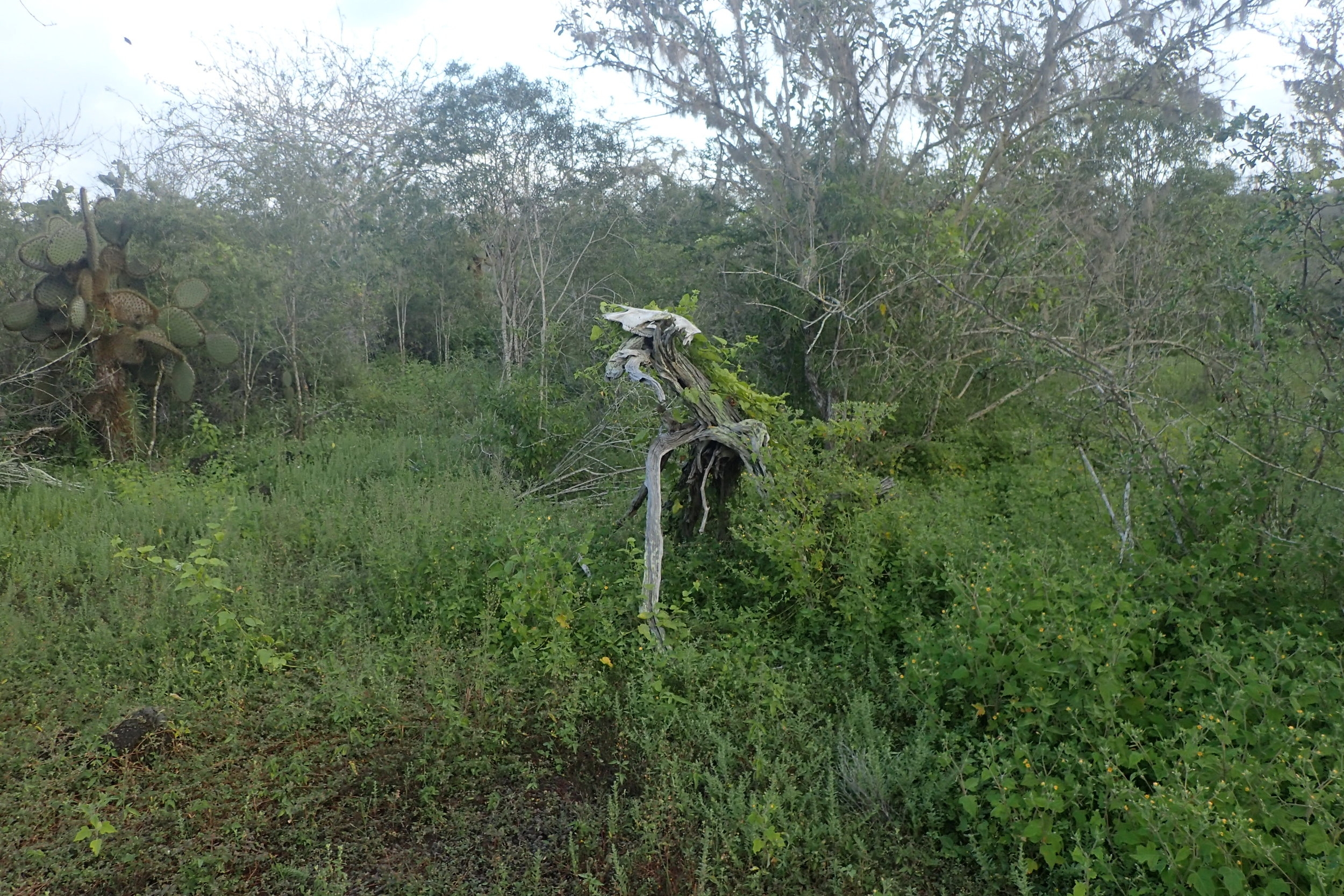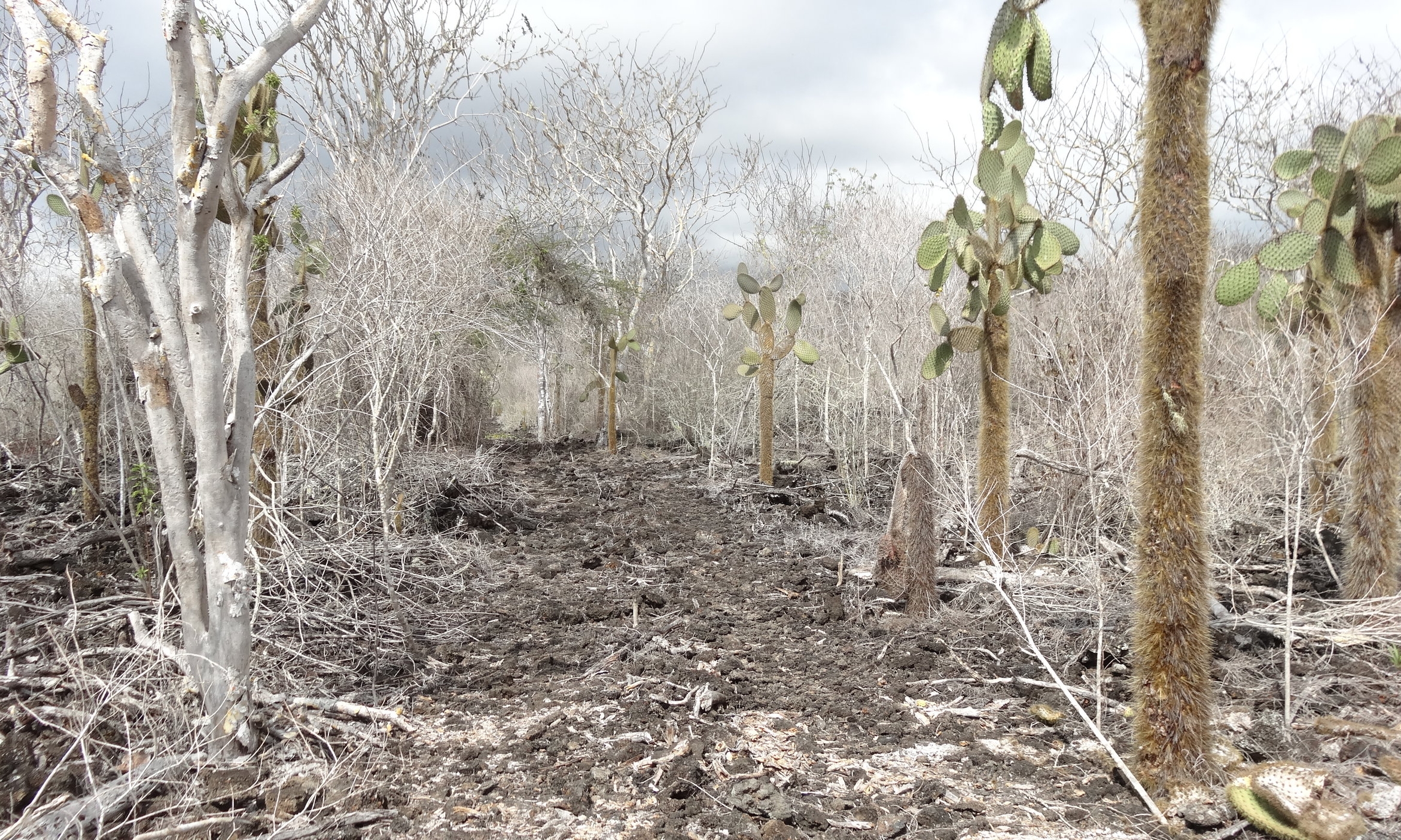How do hosts defend themselves against parasites?
A pair of two day old mockingbird chicks
Animals are attacked by parasites and pathogens every day. How they fight off attack or compensate for its costs is a key focus of my research. During her Ph.D. Sabrina studied tolerance, which refers to the ability of the host to compensate for damage done by parasites without reducing parasite burden. We found that tolerance can vary in a single host population in response to environmental conditions (McNew et al. 2019 Proc Roy Soc B.).
The avian vampire fly and Galápagos mockingbirds
A mockingbird chick a few days before fledging. The blood around its nares (nostrils) is a sign of parasitism by P. downsi.
The life stages of the vampire fly, including the adult fly, the three larval stages, and a pupa
The Avian Vampire Fly (Philornis downsi) is one of the greatest threats to birds in the Galapagos. The larvae of the vampire fly live in the nests of birds and feed on the nestlings, often killing them. Unlike most finches in the Galápagos, mockingbirds seem able to tolerate the vampire fly. In work lead by our collaborator Dr. Sarah Knutie, we found that the vampire fly had no effect on mockingbird fledging success (Knutie et al. 2016).
The importance of the environment
Although it first seemed that mockingbirds were impervious to P. downsi it turned out that they actually can’t tolerate parasitism in all conditions. The Galápagos Islands have a famously harsh and variable environment and mockingbird rely on seasonal rains to have enough food to feed their offspring. We found that in drought years when food is limited, parents can’t provision their young enough to keep up with the energy lost to P. downsi. These results help us understand how the environment mediates the effects of disease.
Our field site during the rainy season
Our field site during the drought
Carry over effects of parasitism
Results from experiment studying delayed effects of parasitism on mockingbirds. “Fumigated” (dark points) are mockingbirds whose nests were treated to eliminate parasites. “Sham-fumigated” are control mockingbirds, whose nests were naturally infested. Parasitism during the first attempt negatively affected the second: even before the second nests were treated, sham-fumigated parents hatched fewer chicks and those chicks were smaller compared to fumigated parents. These carry over effects may explain why the fledging success of sham-fumigated parents did not increase over the course of the season, even though environmental conditions improved. From McNew et al. 2020 Oecologia
Not only are mockingbirds not as tolerant to P. downsi as they first seemed, we found that parasitism can have carry over effects for future mockingbird reproduction. By studying successive reproductive attempts of parasitized and non-parasitized parents, we found that parents whose first nest was parasitized hatched fewer, and smaller nestlings when they renested. These results fit in the context of life history tradeoffs that all organisms face. “Tradeoffs” refers to the fact that all animals have limited energy to devote to activities such as reproduction, foraging, and defense against disease. When a new parasite or disease emerges in a population, animals may have to shift their energy to defense, at the expense of other goals. By studying the ways in which animals respond to a new threat, we can anticipate how they may evolve in a rapidly changing world.







